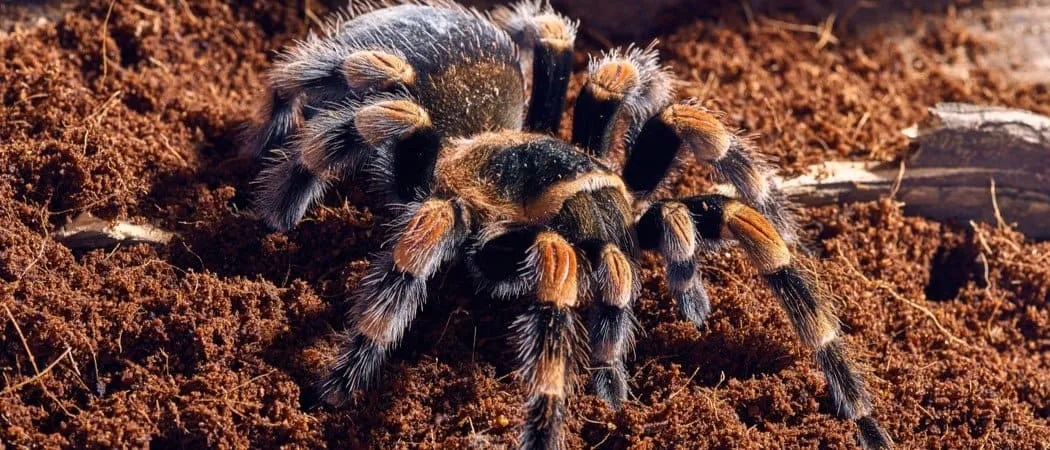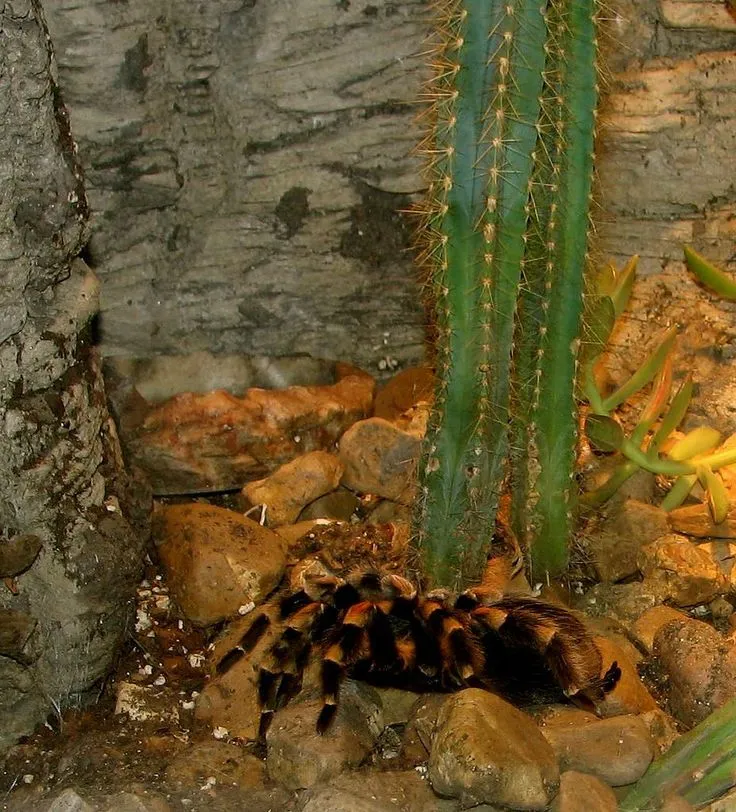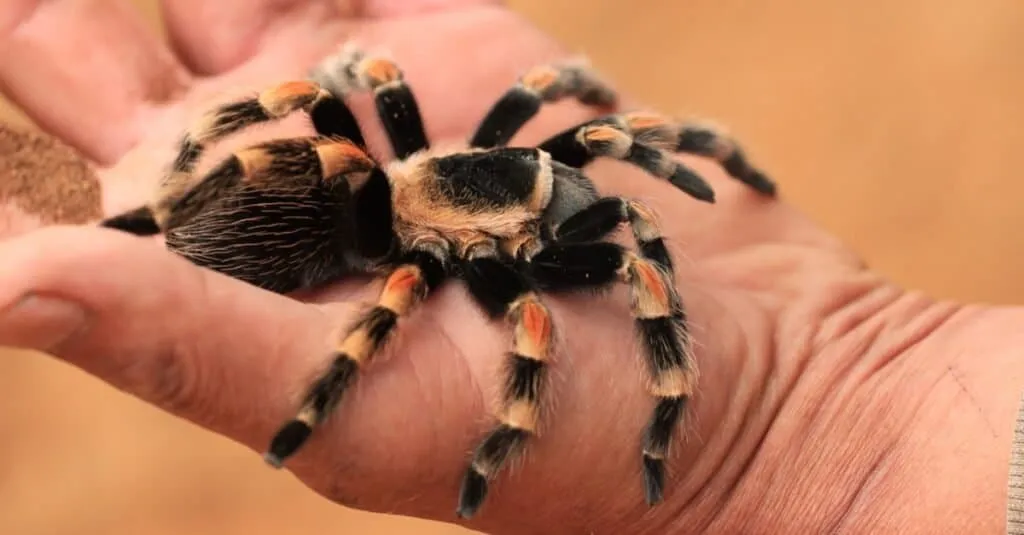The Allure of the Red Knee Tarantula in Australia
The Red Knee Tarantula, scientifically known as Brachypelma hamorii, has captivated the hearts of arachnid enthusiasts worldwide. While not native to Australia, these stunning creatures are often kept as pets due to their striking appearance and relatively docile temperament. Understanding the allure of the Red Knee Tarantula involves appreciating its unique characteristics, its role in the pet trade, and the responsibility that comes with caring for such a fascinating animal. This guide will explore key facts about these captivating tarantulas, focusing on what makes them so special for those interested in keeping one or simply learning more about them. From their vibrant colors to their manageable size, the Red Knee Tarantula offers a glimpse into the diverse world of invertebrates and the joys of responsible pet ownership.
Appearance and Characteristics
The Red Knee Tarantula is immediately recognizable due to its striking coloration and robust build. They are one of the most visually appealing tarantula species. Their bodies are covered in hairs that provide sensory information and contribute to their overall appearance. The contrast between the black body and the vibrant red or orange markings on the leg joints is a key characteristic. These markings aren’t just for show; they play a role in visual communication, especially during mating rituals. The overall appearance is one of a well-proportioned spider, built for both burrowing and foraging. Careful observation reveals intricate details, from the texture of the carapace to the fine hairs covering the legs, highlighting the complexity and beauty of this species. Their appearance is a significant factor in their popularity as pets.
Distinctive Red Markings

The defining feature of the Red Knee Tarantula is, without a doubt, the vivid red or orange coloration on the leg joints. These bold markings provide a stark contrast against the tarantula’s black body, making them instantly recognizable. The intensity of the red can vary depending on the individual tarantula and its age, but the presence of these colors is a consistent trait. The red markings are not merely decorative; they serve as a warning to potential predators, signaling the tarantula’s toxicity or its ability to defend itself. The colors also play a role in attracting mates during the breeding season. For keepers, these vibrant markings are a constant source of fascination, making the Red Knee Tarantula a visually rewarding pet to observe. The maintenance of this coloration is also an indicator of the tarantula’s overall health.
Size and Lifespan
Red Knee Tarantulas are moderate in size compared to some other tarantula species. Females are generally larger than males, with a leg span that can reach up to 6 inches or more. This size makes them relatively easy to manage in captivity. One of the most remarkable aspects of the Red Knee Tarantula is its longevity. Females can live for up to 20 to 25 years, while males typically have a shorter lifespan, often living for only 5 to 10 years. This long lifespan means that owning a Red Knee Tarantula is a significant commitment. The long lifespan also provides an opportunity for owners to develop a deep bond with their pet. The size and lifespan of this tarantula make it a fascinating and rewarding pet for those who are prepared to provide the necessary care and commitment over the long term.
Habitat and Distribution
While the Red Knee Tarantula is not native to Australia, understanding its natural habitat is key to providing proper care in a captive environment. In the wild, these tarantulas are found in the arid scrublands and deserts of the Pacific coast of Mexico. They are adapted to a warm, dry climate, and they spend a significant amount of time in burrows that they create for shelter. Replicating these environmental conditions in a terrarium is essential for the tarantula’s health and well-being. This includes providing appropriate substrate for burrowing, maintaining the correct temperature and humidity levels, and offering hiding places that mimic their natural environment. This attention to detail allows keepers to create a thriving habitat for their Red Knee Tarantulas, ensuring they live a happy and healthy life.
Natural Environment

In their natural habitat, Red Knee Tarantulas are ground-dwelling spiders, primarily found in the arid regions of western Mexico. They prefer areas with scrub vegetation, where they can construct burrows in the soil. These burrows provide a safe haven from predators and the harsh desert climate. The tarantulas are well-adapted to survive in dry conditions, and they obtain most of their moisture from their prey. They are nocturnal hunters, emerging from their burrows at night to forage for food. The natural environment of the Red Knee Tarantula is characterized by extremes of temperature and limited rainfall. The ability of these tarantulas to thrive in such conditions showcases their resilience and their remarkable adaptation to their surroundings. Their natural habitat also influences their behavior and their specific needs in captivity.
Finding in Australia
As the Red Knee Tarantula is not native to Australia, it cannot be found in the wild. They are, however, available for purchase from reputable breeders and pet stores. They are often kept as pets, they are not considered an invasive species in Australia. It is essential to purchase from a licensed source to ensure the tarantula is healthy and legally obtained. Owners must also be prepared to provide a suitable environment for the tarantula to thrive, mimicking its natural habitat as closely as possible. The availability of these tarantulas in the pet trade highlights their popularity among arachnid enthusiasts. Furthermore, it requires responsible pet ownership and adherence to local regulations. Owning a Red Knee Tarantula in Australia provides a unique opportunity to appreciate the beauty and complexity of these amazing creatures, but it is crucial to do so with respect and responsibility.
Behavior and Temperament
The Red Knee Tarantula is generally known for its docile and calm temperament, making it a popular choice for beginner tarantula keepers. They are less likely to bite than some other species, but they can still exhibit defensive behaviors when threatened. Understanding their behavior is essential for safe handling and providing appropriate care. Their temperament is largely influenced by their environment. They tend to be more relaxed when they feel safe and secure in their enclosure. Keeping the terrarium clean, providing proper hiding places, and avoiding unnecessary disturbances can help to maintain a calm demeanor. Careful observation of their behavior can also help owners understand their individual tarantula’s personality and needs.
Docile Nature

The Red Knee Tarantula is known for its relatively docile nature, which makes it a preferred species for many keepers. They are less likely to bite or display aggressive behavior compared to some other tarantula species. However, it’s important to remember that they are still wild animals, and they can react defensively if they feel threatened. Their docile nature means that they are generally content to remain in their enclosures. They are typically slow-moving and not prone to sudden movements, reducing the risk of accidents or injuries. This calm disposition is a key reason for their popularity as pets. It is important to handle them carefully and avoid any actions that could cause stress or fear. Approaching them calmly, speaking softly, and avoiding quick movements will help ensure a positive interaction.
Defensive Mechanisms
While Red Knee Tarantulas are generally docile, they do have defensive mechanisms they employ when threatened. One of these is the urticating hairs on their abdomen. When feeling threatened, they will flick these hairs towards the perceived threat, causing irritation and itching. This is a common defense mechanism among New World tarantulas. Additionally, they can adopt a defensive posture, raising their front legs and fangs to appear larger and more intimidating. Understanding these defense mechanisms is crucial for safe handling and interaction with the tarantula. Owners should avoid handling the tarantula unnecessarily. They should also be aware of the potential for irritation from urticating hairs. By understanding their defensive behaviors, keepers can minimize stress for the tarantula and ensure a safe experience for both the owner and the pet.
Diet and Feeding Habits
Providing a proper diet is crucial to the health and well-being of your Red Knee Tarantula. These tarantulas are insectivores. They primarily eat live insects. Their feeding habits are relatively straightforward, making them easier to care for than some other pets. A balanced diet that meets their nutritional needs is necessary to ensure their proper growth and development. The types and sizes of insects offered should be appropriate for the size of the tarantula. Regular feeding and careful observation of their eating habits will help maintain their overall health. Keepers need to be prepared to handle and care for live insects, ensuring they are healthy and free from pesticides or other harmful substances. The feeding regime should also take into account the tarantula’s age, size, and molting cycle.
Preferred Food

The Red Knee Tarantula’s preferred food consists primarily of live insects. Crickets, cockroaches, and mealworms are the most commonly used options. The insects should be of an appropriate size, not larger than the tarantula’s abdomen, to prevent potential injury. Variety in the diet can be beneficial, but the staple diet should remain consistent. Before feeding, the insects should be gut-loaded, meaning they are fed nutritious food. This process ensures that the tarantula receives a balanced diet. The insects offered should also be free from pesticides or other harmful substances. Providing a varied and nutritious diet is key to maintaining the tarantula’s health, energy levels, and overall well-being. Regularly cleaning the enclosure after feeding to remove any uneaten insects will help maintain a clean environment.
Feeding Frequency
The feeding frequency of a Red Knee Tarantula depends on its age and size. Spiderlings and juveniles typically require more frequent feedings, usually 2-3 times per week. Adult tarantulas can be fed less often, usually once a week or every other week. It’s important to observe the tarantula’s feeding behavior. If it consistently refuses food, it may be preparing to molt. When a tarantula is in premolt, it may stop eating altogether. Overfeeding should be avoided, as this can lead to health problems. Adjusting the feeding schedule to the tarantula’s individual needs is essential. Always provide fresh water, available in a shallow dish. The amount of food given should be proportional to the tarantula’s size, with uneaten food removed within a day to maintain a clean enclosure. Observing their eating habits will help keepers adjust their feeding schedule accordingly.
Conservation Status and Threats
While Red Knee Tarantulas are not native to Australia, the conservation status of this species in its native habitat is important to consider. Understanding the threats faced by wild populations helps to ensure the responsible care of captive tarantulas. These tarantulas play a vital role in their ecosystems, and their decline can have cascading effects. Awareness of conservation efforts and supporting responsible breeders are important steps to protect this species. By understanding these conservation issues, owners can make informed decisions and contribute to the preservation of this fascinating species.
Threats to the Tarantula

The primary threats to Red Knee Tarantulas in their natural habitat include habitat loss due to deforestation and agriculture, as well as the pet trade. Over-collection for the pet trade can significantly impact wild populations. Habitat destruction reduces the available space for the tarantulas. It also reduces the availability of prey. Climate change and environmental degradation can also affect their survival. Protecting their natural habitat is crucial for their long-term survival. Supporting sustainable practices and responsible breeding programs is also vital. Through education and awareness, we can help mitigate the threats these beautiful creatures face and ensure their survival for future generations. Responsible pet ownership plays a significant role in this conservation effort.
Conservation Efforts
Conservation efforts focused on Red Knee Tarantulas include habitat preservation, sustainable pet trade practices, and research. Protecting their natural habitat is paramount to their survival, and this involves preventing deforestation, promoting sustainable land use, and establishing protected areas. Supporting responsible breeders and ethical pet stores is essential. These breeders prioritize the health and well-being of the tarantulas. They contribute to the conservation of the species. Supporting scientific research is another key aspect of conservation. This research helps to understand their biology, behavior, and threats they face. Education and awareness campaigns play a vital role in these efforts. Educating the public about the importance of tarantula conservation can help encourage responsible practices and increase the chances of long-term survival. By supporting these efforts, we contribute to the protection of these fascinating creatures and the ecosystems they inhabit.
